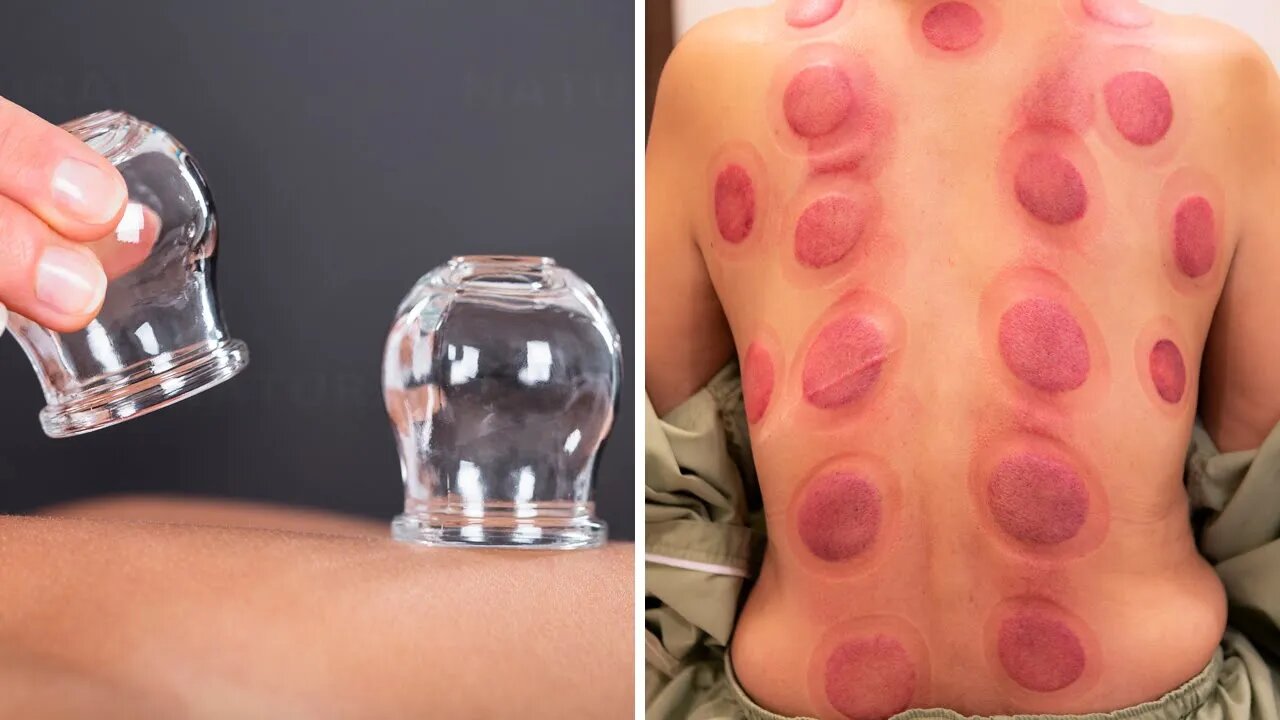Premium Only Content

Cupping Therapy: An Ancient Technique With Many Health Benefits (Hijama Therapy)
Have you ever heard about cupping therapy?
In 2016, Olympic swimmer Michael Phelps’ back showed many bruises and red "spots". Do you remember it?
Many people don't know, but those spots were caused by cupping therapy.
This Chinese medicinal therapy, created more than two thousand years ago, is a type of natural treatment in which vacuum is created by the suction of skin (by cups).
The vacuum created stimulates blood circulation and it is believed that the toxins in the blood are released through this process.
When the blood circulation is activated by the cups, the increase of blood in the area favors the nutrition of muscles, alleviating tensions and muscle and joint aches.
Watch the video to learn the main benefits of cupping therapy.
But, how does cupping therapy work?
You put fire on a piece of cotton and pass the flame inside a special cup and put it over the body, creating a vacuum. This process is completely painless, and you will feel just a soft suction on your skin.
Usually, one does not feel any heat or discomfort, and the sessions can be even relaxing.
The benefits of cupping are very satisfactory and are worth the slight discomfort. If you have done cupping therapy before, share your opinions with us.
----------------------------------------
Facebook: https://bit.ly/38BWbw3
Pinterest: https://bit.ly/2Irvwa6
Disclaimer: The materials and the information contained on Natural Cures channel are provided for general and educational purposes only and do not constitute any legal, medical or other professional advice on any subject matter. These statements have not been evaluated by the FDA and are not intended to diagnose, treat or cure any disease. Always seek the advice of your physician or other qualified health provider prior to starting any new diet or treatment and with any questions you may have regarding a medical condition. If you have or suspect that you have a medical problem, promptly contact your health care provider.
-
 3:55
3:55
Natural Cures
1 year ago $0.84 earnedDrink This Tea Tonight to Flush Out All The Toxins from the Body
3.3K4 -
 1:47:17
1:47:17
Roseanne Barr
4 hours ago $6.02 earnedThe Most Offensive Comic, Leonarda Jonie | The Roseanne Barr Podcast #86
26.7K19 -
 LIVE
LIVE
Joker Effect
1 hour agoRumble Community Night. Reviewing Rumble partnership program, it's streamers and community discussion.
1,787 watching -
 LIVE
LIVE
Laura Loomer
1 hour agoEP100: MAGA Goes Scorched Earth On USAID
1,750 watching -
 LIVE
LIVE
Talk Nerdy 2 Us
3 hours ago🔥 Talk Nerdy 2 Us – Feb 7th: HACKED, TRACKED & UNDER ATTACK! 🔥
191 watching -
 LIVE
LIVE
Man in America
9 hours agoFluoride & the Sinister Plot to Poison Us From Birth w/ Larry Oberheu
780 watching -
 LIVE
LIVE
I_Came_With_Fire_Podcast
9 hours ago🔥USAID SCANDAL | MA-GAZA | Cartel VIOLENCE Ramps Up🔥
163 watching -
 LIVE
LIVE
SpartakusLIVE
3 hours agoShadow BANNED, but we PARTY ON || Friday Night HYPE
471 watching -
 LIVE
LIVE
Omar Elattar
2 hours agoGRANT CARDONE: “Will I Run for Governor?” | Trump EXPOSED | Bitcoin | $500 Billion Crisis!
220 watching -
 46:48
46:48
Glenn Greenwald
5 hours agoGlenn Takes Your Questions On Gaza, USAID, and More | SYSTEM UPDATE #403
46.2K35